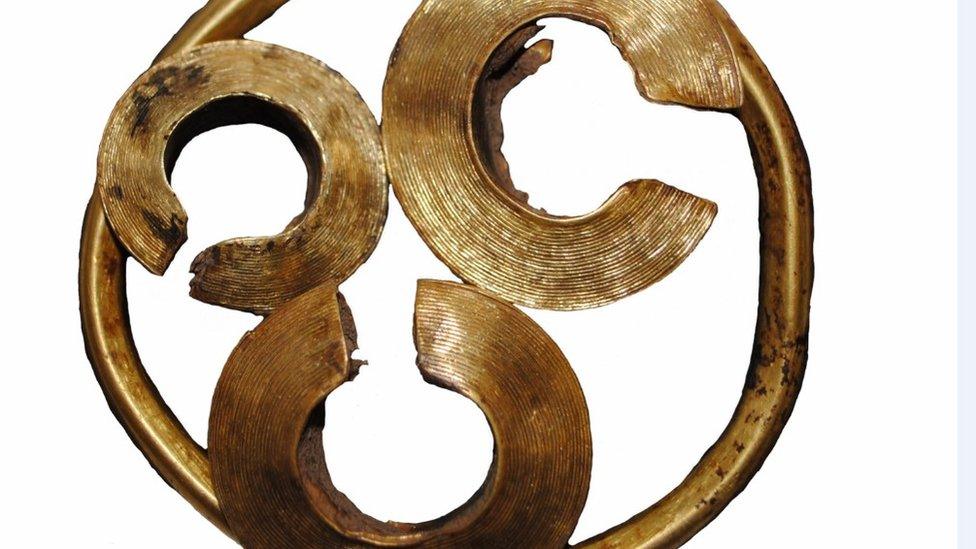Bronze Age arm ring found in West Cumbria on display
- Published
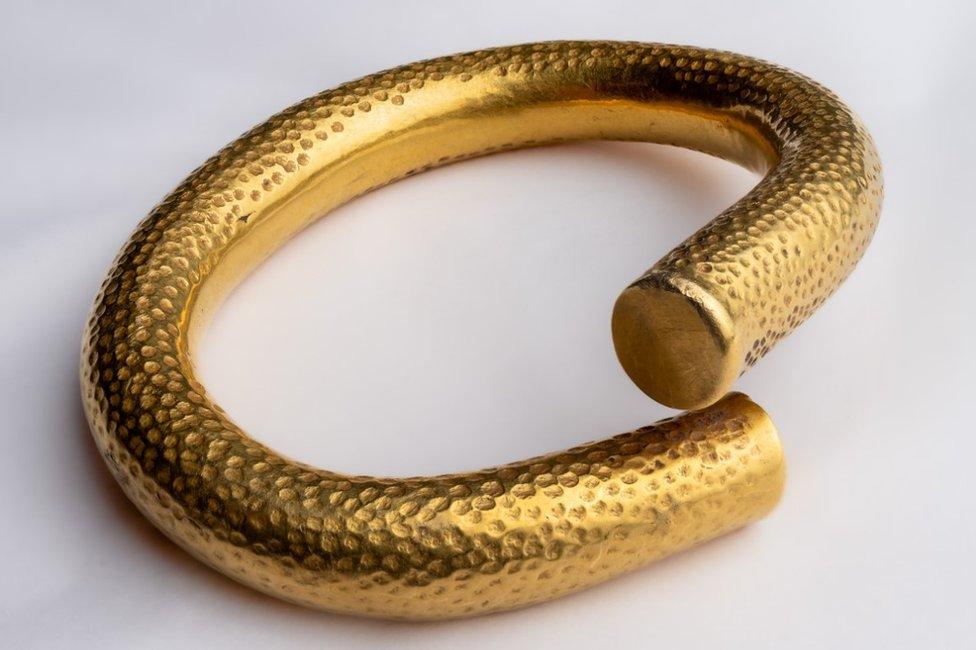
Experts said the object was the first of its kind found in West Cumbria
A solid gold arm ring from the late Bronze Age that was found in West Cumbria has gone on display.
The item was unearthed by a metal detectorist in 2019 and is thought to originate from 900-700 BC.
Although similar items have been found in the UK, experts said it was the first discovered in the area.
It is on display at the Beacon Museum in Whitehaven until June and then at Tullie in Carlisle from July, before rotating between the two venues.
The item has been described as of "regional significance and of national interest".
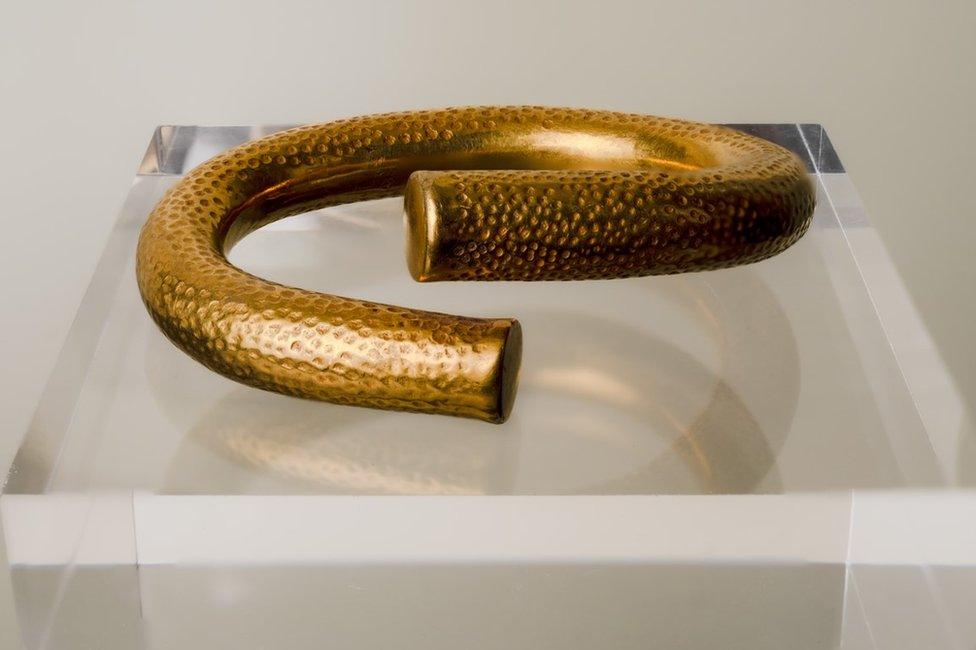
The value of the item and the exact location of where it was found have not been disclosed
The ring is circular and creates a C shape, with the two end terminals overlapping.
It is heavily decorated with "a consistent punch style of decoration" which experts said was similar to examples found in Ireland, such as at Trimblestone Castle, County Meath.
The value and the exact location of where it was found have not been disclosed.

The majority of Bronze Age material recorded originates in the south of Cumbria
Heather Holmes, from the Beacon Museum which jointly acquired the ring with Tullie, called it a "must-see exhibit".
"It will support the museum's existing prehistoric and bronze age collections as it will be the first item made of metal from the period to enter the collection," she added.
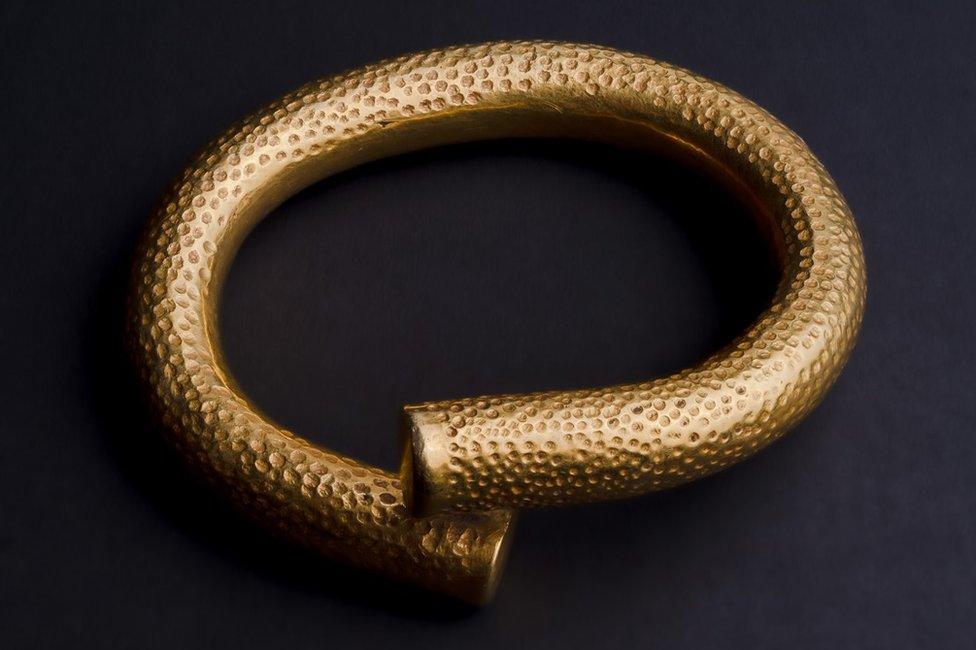
The design style is similar to examples found in Ireland
Anna Smalley, from Tullie, said only eight other gold objects from the Bronze Age have been recorded in Cumbria since the British Museum's Portable Antiquities Scheme was launched in 1997.
"The majority of Bronze Age material recorded originates in the south of Cumbria, making this northern example really exciting for the local region," she added.
The museum said some items it holds, including Bronze Age gold to rock art and Neolithic tridents, "all hint towards a strong trading and migration network" between England and Ireland through Cumbria, across the Stone Age and Bronze Age.

Follow BBC Cumbria on Facebook, external, X (formerly Twitter), , externaland Instagram, external. Send your story ideas to northeastandcumbria@bbc.co.uk, external.
- Published27 March 2023
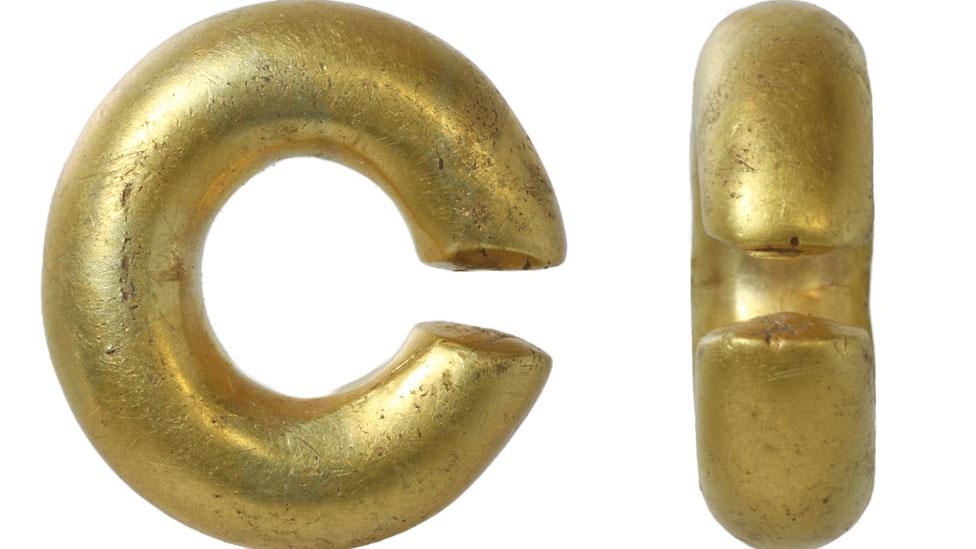
- Published24 January 2018
